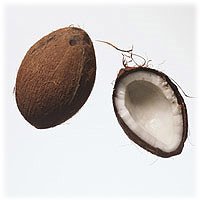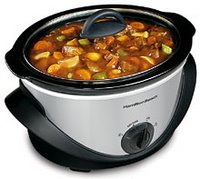
If you've been coming to this site for any period of time, you're aware that we have a thing for "Super Foods".
The Seattle Times indulges us again today with a listing of the top 12, as well as some "New superstars" (at the end of the article). It's all so terribly exciting to see so many superheroes gathered together in one place.
1. BeansWhy? High in folate, fiber and antioxidants, beans can help lower cholesterol and LDL levels, scavenge free radicals, moderate insulin levels and reduce cancer risk.
How much? Eat two ½-cup servings a day of cooked or canned beans.
2. BlueberriesWhy? A true nutritional powerhouse, blueberries provide more antioxidants than any other fruit or vegetable. Phytonutrients include anthocyanins, chlorogenic acid, ellagic acid, catechins and resveratrol, substances that fight cancer, heart disease and age-related memory loss.
How much? If possible, eat 1/2 cup fresh or frozen or 1/4 cup dried blueberries every day. Eat any type of berry at least three times a week.
3. BroccoliWhy? Cruciferous vegetables are loaded with antioxidants. Broccoli contains cancer-fighting sulforaphane, indoles and carotenoids plus beta-carotene, lutein and zeathanin that promote eye health and ward off macular degeneration.
How much? Eat 1/2 cup raw or 1 cup cooked broccoli every day.
4. OatsWhy? Oatmeal's mighty nutrition profile.
How much? Eat at least three servings of whole grains a day. A serving equals one cup cooked oatmeal, 1/2 cup uncooked rolled oats or 1/4 cup steel-cut oats.
5. SoyWhy? An important source of vegetable protein, soy also contains isoflavones, estrogenlike substances that protect and maintain bone strength. Soy also contains important omega-3 fatty acids, which promote heart health.
How much? Eat one serving of soy foods a day. The size depends on the form of the food. Try edamame for snacking out of hand.
6. SpinachWhy? Spinach contains more than a Popeye-sized dose of iron. When it comes to antioxidants, it's packed with carotenoids such as beta-carotene and lutein for eye health.
How much? Eat at least 1 cup cooked spinach or other dark leafy green vegetable a day.
7. Sweet potatoesWhy? Loaded with beta-carotene, sweet potatoes boost the immune system. They also reduce cholesterol buildup in the arteries and help fight age-related macular degeneration and a variety of cancers.
How much? Eat at least one 1/2-cup serving of sweet potatoes or other beta-carotene-rich produce (carrots, butternut squash, pumpkin and orange bell peppers) a day.
8. TomatoesWhy? Tomatoes contain lycopene, plus a range of beneficial phytochemicals that protect against heart attack, cancers and age-related macular degeneration. Cooked tomatoes contain more lycopene than raw tomatoes.
How much? Eat one serving a day with a little bit of healthy fat, such as olive oil, to help absorb the lycopene. Serving sizes are one medium raw tomato, about 1 cup cherry tomatoes, 1/2 cup sauce, 1/4 cup puree, 2 tablespoons paste or 6 ounces juice.
9. WalnutsWhy? If you're looking for an excellent source of "good" polyunsaturated fats, walnuts are one of the few plant sources high in omega-3 fatty acids. Walnuts are the only nuts that contain ellagic acid, a cancer-fighting antioxidant. The amino acid arginine can reduce the risk of heart attack.
How much? Eat 1 ½ ounces of nuts per day. One ounce equals 14 walnut halves.
10. Wild salmonWhy? Wild salmon contains large amounts of omega-3, a fatty acid that reduces the risk of heart disease and heart attack by lowering blood pressure and bad cholesterol. Omega-3s also reduce inflammation that triggers arthritis and autoimmune diseases.
How much? A serving is just 3 ounces, roughly the size of a deck of cards, or 1/4 cup canned. Eat 12 ounces a week.
11. Extra-virgin olive oilWhy? The monounsaturated fats of olive oil are considered "good" fat that reduces cardiovascular disease, lowers blood pressure and prevents some types of cancer.
How much? Eat 1 tablespoon most days.
12. Dark chocolateWhy? Dark chocolate has the highest antioxidant content of any food. The darker the chocolate, the higher the count.
How much? Eat a 1-ounce serving daily. Also, try grapes, red wine and green tea, which are high in polyphenols, which boost good cholesterol. In addition to dark chocolate candy, try raw cocoa nibs. Although somewhat bitter, they have an intense, tannic flavor, like wine.
 I don't think I've ever actually purchased coconuts in a store. Out East here, I haven't come across much use for them, but when the time comes that I branch out and try using them as part of a recipe or something, I'm not sure how I would know which one was a good one.
I don't think I've ever actually purchased coconuts in a store. Out East here, I haven't come across much use for them, but when the time comes that I branch out and try using them as part of a recipe or something, I'm not sure how I would know which one was a good one.














